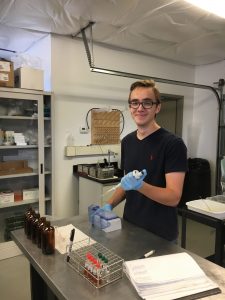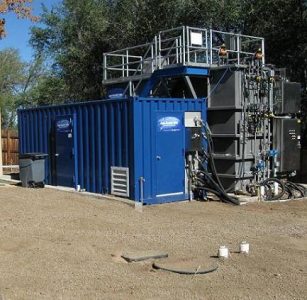Post contributed by Matthew Preisser, Office of Sustainability Intern
How would you describe the uses of water to someone? Your first thoughts might be of swimming to escape Alabama’s sweltering summer heat. Or perhaps having a water balloon fight as a child. Maybe it’s having a cool, refreshing drink after a long day worth of yard work. You might even just have an image of the watery, blue planet we live on.
Your mind probably didn’t jump to wastewater treatment. But behind every swimming pool, water balloon, and glass of water, lies a treatment process for the water we have already used. These processes don’t come cheap and are often disregarded and forgotten along with every flush we take and spill we make. According to a study done at the University of Texas at Austin in 2010, over 12% of the energy our country produces is specifically used in the conveyance, treatment, and disposing of water. It takes this much energy, over 600 billion kWh, to treat the 34 billion gallons of wastewater we generate every year. In wastewater treatment, the old saying used to be, “The solution to pollution is dilution.”

Myself in the lab at the Colorado School of Mines analyzing water samples.
This mentality over the past 30 years has led to the degradation of many natural systems and habitats that provide essential ecosystem services because we would simply dump pollutants in larger bodies of water. Changing how we think about water treatment is necessary going into the future because of the impacts it has on our daily lives.
During this past summer, I had the opportunity to do research on sustainable urban biological wastewater treatment at the Colorado School of Mines (CSM) in Golden, Colorado. At CSM, they operate a decentralized sequencing batch membrane bioreactor that treats wastewater generated from dorms on campus. Decentralized treatment has the potential to tailor treated water for immediate reuse to benefit the local community. For example, did you know you are watering your lawn with drinkable water? This takes a large amount of energy to treat and pipe in water you will never actually drink and hardly come in contact with. With decentralized treatment, the water you have already used can be treated to immediately be used again; thus, conserving resources and save money. We should not think of wastewater as being “waste” anymore, but as a resource we can modify to reduce our water and energy needs.
One of the drawbacks of decentralized treatment is that this technology is relatively untested compared to conventional treatment processes and results can be variable at times.

The Sequencing-Batch Membrane Bioreactor located at Mines Park in Golden, CO.
My specific project examined how well we can predict biological faults and system failures before they occur, so that we are able to produce consistent water quality results. The data collected is currently being used in the development of a fault detection program to make these systems more reliable.
Only 20% of the wastewater in the world is treated properly. In developing nations that lack larger regional wastewater treatment infrastructure, decentralized plants have the ability to be deployed to serve the needs of individual communities. Having the ability to conserve water at the local level can greatly increase the access individuals have to water resources while also reducing their energy dependency.
While wastewater treatment is not the prettiest industry and we often forget about its importance, if we invest our time in developing innovative water solutions today, we can start to live in a cleaner, watery blue world tomorrow.
Want to know more? Check out these resources:




